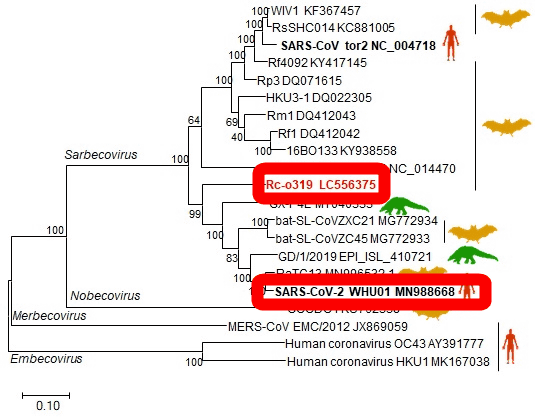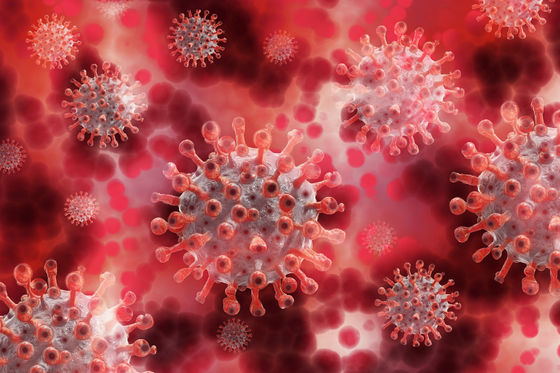It turns out that a closely related species of the new coronavirus was discovered many years ago from Japanese bats

A study that a closely related species of the new coronavirus (SARS-CoV-2), which raged around the world in 2020, was detected in
Detection and characterization of Bat Sarbecovirus Phylogenetically Related to SARS-CoV-2, Japan --Volume 26, Number 12 —December 2020 --Emerging Infectious Diseases journal --CDC
https://wwwnc.cdc.gov/eid/article/26/12/20-3386_article
Detecting a virus genetically related to the new coronavirus in Japanese bats | Graduate School of Agricultural and Life Sciences, University of Tokyo
https://www.au-tokyo.ac.jp/topics/topics_20201104-2.html
Coronaviruses closely related to the pandemic virus discovered in Japan and Cambodia
https://www.nature.com/articles/d41586-020-03217-0
Many years ago, reports from Cambodian and Japanese research teams came that SARS-CoV-2 relatives were found in Greater horseshoe bats. A team from the Pastur Institute in Phnom Penh, Cambodia, reported that 'a closely related species was found in two Greater horseshoe bats captured in northern Cambodia in 2010,' the University of Tokyo Graduate School of Agriculture and Life Sciences in Japan. The graduate school team reported that 'a closely related species was found in the Greater Horseshoe Bat captured in a cave in Iwate Prefecture in 2013.' A closely related species discovered in Iwate Prefecture has been named 'Rc-o319' by the research team.
The team at the Graduate School of Agriculture and Life Sciences, the University of Tokyo, sequenced the entire length of the viral genome and analyzed the evolutionary phylogenetic tree of Rc-o319, and found that Rc-o319 is genetically closely related to SARS-CoV-2. I'm checking. The evolutionary tree of Rc-o319 and SARS-CoV-2 is shown below, and these closely related species include the virus found in bats (yellow bat icon) and the virus found in pangolins (green). It is also known that there are many (icons like bats).

In addition, the team of the University of Tokyo Graduate School of Agricultural and Life Sciences also conducted verification on whether Rc-o319 infects humans. As a result, it was revealed that Rc-o319 infected the cells of the host Little Horseshoe bat, but not human cells.
A research team at the University of Tokyo Graduate School of Agriculture and Life Sciences has concluded that 'Rc-o319 is extremely unlikely to infect humans,' so that SARS-CoV-2, which is rampant in the world, will infect humans. Research should be conducted on the existence of an 'intermediate host' to consider the possibility of mutation.

In addition to the closely related species of Japan and Cambodia announced this time, 'RaTG13', which seems to have the highest genetic association with SARS-CoV-2, has been discovered in China. It seems that RaTG13 is not a virus mutated to SARS-CoV-2, but it is thought that it 'has a common ancestor' because the difference in genome is only 4%. Experiments at the cellular level have also suggested that RaTG13 may infect humans.
Regarding reports from Cambodia and Japan, Aaron Irving, an expert on bat-derived infectious diseases belonging to Zhejiang University in China, said, 'The closely related species of SARS-CoV-2 are still stored in the freezer of the laboratory. It may be there. ' 'SARS-CoV-2 is not a virus that suddenly appeared. SARS-CoV-2 relatives have been around for a long time before we were aware of it,' said Tracy Goldstein of the University of California, Davis, who worked on a research team in Cambodia. It existed. '
Related Posts:







